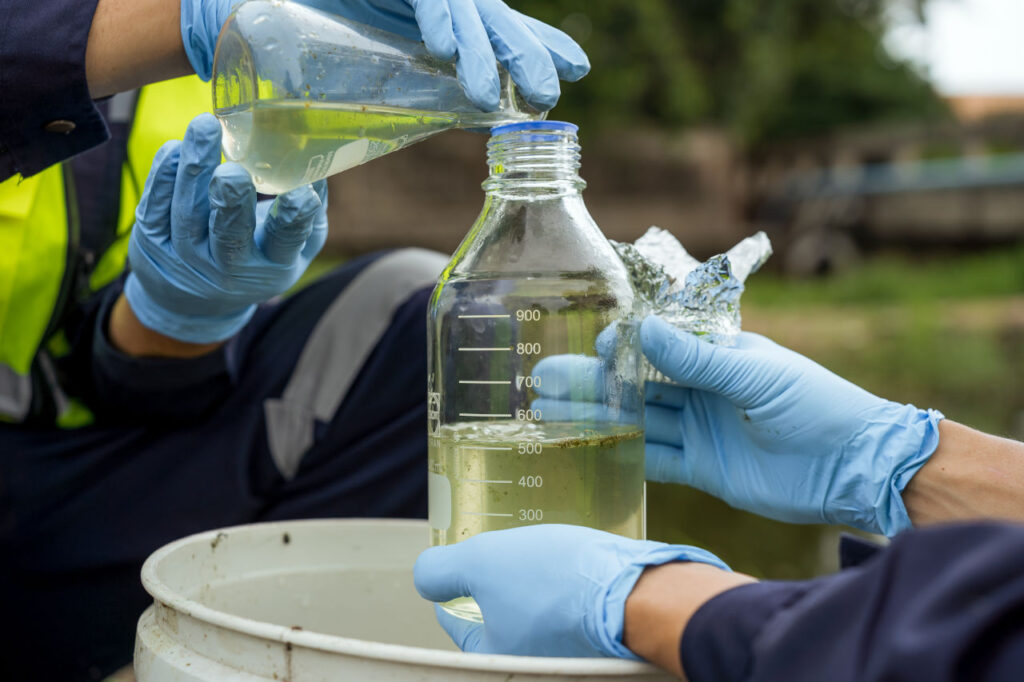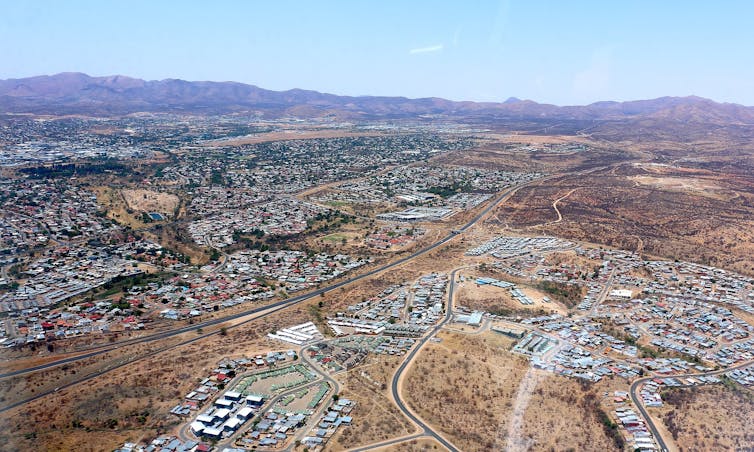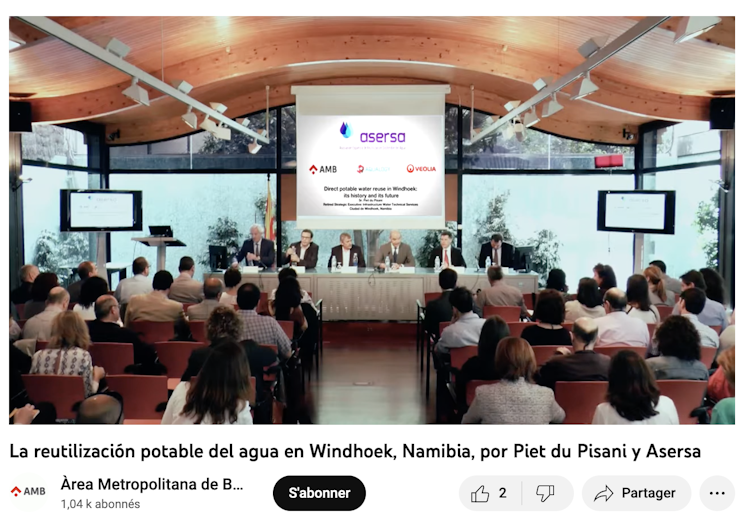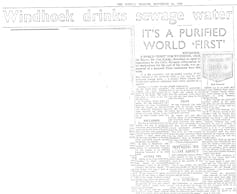Countries that recycle wastewater into drinking water
English speakers like to call this water "toilet-to-tap water." Literally, this means water that goes from your toilet bowl to your tap. It's an unappealing expression that ignores the many chemical, physical, and biological processes involved in recycling wastewater into high-quality drinking water.
Julie Mendret, University of Montpellier

While this idea may still make many people grimace, it is nevertheless becoming a serious avenue for consideration for more and more countries and municipalities around the world that are rightly concerned aboutthe depletion of freshwater resources. The megacity of Bangalore, India, is working on such wastewater recycling, as is Los Angeles.
In the United States, the Texas cities of Big Springs and Wichita Falls have already been using this technique, known as direct potable reuse, since 2011, as has the city of Beaufort in South Africa.
Namibia has been treating wastewater for drinking water since 1968.
But in this area, and this remains little known, another country remains the undisputed pioneer: Namibia. Ranked139thin terms of development, it may seem surprising that this southern African country is so advanced, but when you consider the virtual absence of water resources in its capital, Windhoek, it becomes less surprising that the municipality has sought to innovate.

In the middle of an arid plain, more than 200 km from the coast, Windhoek (population nearly 500,000) cannot harvest the scarce rainwater, due to its almost immediate evaporation in these desert latitudes, nor can it draw on the rivers or groundwater in the surrounding area, which are rarely replenished when they are not completely dry.
The article you are reading is brought to you in partnership with "Sur la Terre" (On Earth), an AFP audio podcast. A creation designed to explore initiatives promoting ecological transition around the world. Subscribe!
In 1968, the city, then under South African rule, was experiencing impressive population growth when it began recycling its wastewater to produce drinking water. Fifty-five years later, 30% of wastewater is recycled into drinking water in less than ten hours. The rest of the domestic drinking water comes from dams and boreholes in other parts of the country. https://www.youtube.com/embed/arCmp7jOjiw?wmode=transparent&start=0
Wastewater purified in 10 steps
In order to recycle wastewater into drinking water, Windhoek has implemented a series of innovative processes that now consists of 10 stages. It includes physical-chemical processes, such as coagulation and flocculation (adding a coagulant to create flocs, i.e., clusters of suspended matter that then sink due to their weight and are eliminated in the sludge), as well as chemical processes such as ozonation.
When it comes into contact with ozone, water undergoes an oxidation process that breaks down many micropollutants (pesticides, drug residues, etc.) and inactivates bacteria, viruses, and parasites.
This is followed by final stages of biological filtration using granular activated carbon and physical filtration (activated carbon filtration and membrane ultrafiltration) to remove any remaining soluble pollutants. Before being sent into the network, the water undergoes quality controls and chlorination, ensuring a long-lasting disinfectant effect so that the quality of the water obtained does not deteriorate during distribution.
[More than 85,000 readers trust The Conversation's newsletters to help them better understand the world's major issues. Subscribe today]
In recent years, the Windhoek wastewater treatment plant has welcomed intrigued and interested visitors fromAustralia, Germany, the United Arab Emirates, and elsewhere. And with good reason, as the techniques developed in Namibia remain interesting in more ways than one.
A less expensive solution than desalination
For countries seeking new sources of drinking water, wastewater recycling remains less energy-intensive and more environmentally friendly than seawater desalination, a technique that is nevertheless more widespread throughout the world. Whereas treating wastewater for drinking purposes consumes between 1 and 1.5 kWh percubic meter, desalination requires between 3 and 4 kWh percubic meter. In addition, the latter technique produces bulky waste: salt and pollutant concentrates that are often discharged directly into the seas and oceans, disrupting ecosystems.

Despite all these advantages and the convincing results in Namibia, wastewater treatment is still in its infancy on a global scale because its implementation involves overcoming various barriers. First of all, there is the cost of installation. Currently, only developed countries have been able to finance such projects, either on their own soil (in the United States, Singapore, etc.) or abroad. For example, the modernization of the Namibian plant was made possible by a public-private partnership between the French company Veolia, the Australian-Indian company Wabag, and the city of Berlin.
Financial, legislative, and psychological barriers
Secondly, because the legislation in different countries remains very restrictive. In Europe, for example, such a plant would not currently be authorized, and the only project currently underway to make treated wastewater drinkable, the Jourdain Program in Vendée, will discharge the water into a reservoir used as a reserve for drinking water production and not directly into the water distribution system: this is indirect purification.
Even when the funds and laws are in place to allow the direct use of drinking water from treated wastewater, one final barrier remains, and it is a significant one: making it acceptable to the population to drink treated wastewater and overcoming what is known as the "yuck factor." In 2000, a $55 million wastewater treatment plant in a Los Angeles neighborhood had to close a few days after it opened because "never drink toilet water" had become an election promise of the politician running for mayor.
In Namibia, this problem did not arise when wastewater treatment was introduced, as the residents of Windhoek, then under apartheid rule, were presented with a fait accompli three months after the first plant began operating. However, in an article in the Sunday Tribune in November 1968, the journalist covering the announcement of this new wastewater recycling system reported that the mayor of Windhoek at the time, in a blind taste test, preferred the taste of treated wastewater to that of water from conventional sources.

The example of Singapore
However, not informing the public beforehand remains a radical and inadvisable solution, as raising public awareness of water scarcity and the need for more sustainable alternatives remains the best way to launch such a project. This is what made the Singapore project a success, which placed a strong emphasis on communication around the project to make treated wastewater drinkable, for example by organizing visits to the treatment plant and showing the then prime minister calmly drinking a glass of this new recycled wastewater.
Thus, the initial reaction of disgust turned into national pride. Pride in mastering cutting-edge technology and pride in gaining greater independence from neighboring Malaysia, which remained its main supplier of drinking water and with which diplomatic relations could be tense.
Beware of the "rebound effect"
But in an effort to become self-sufficient in terms of water resources, Singapore has not put all its eggs in one basket, and has also invested in seawater desalination, rainwater harvesting, and reducing its residents' water consumption (which fell from 165 liters per day per capita in 2000 to 141 liters in 2018).
For all advocates of better use of water resources, this restraint is crucial, both upstream and in parallel with the development of wastewater treatment projects, in order to combat what is now known as the "rebound effect." This expression describes the uninhibited and increasing use of water resources following the implementation of desalination or treated wastewater reuse techniques. These new water resources should only be considered as a means of meeting existing and essential needs and uses, often as a substitute for drinking water, and not as a call to create new ones.
In order to maximize the resources at our disposal, the wastewater recycling plants of the future will also need to recover the waste produced by wastewater treatment processes, for example by transforming phosphorus and nitrogen into nutrients that can be used in agriculture, or by producing energy through methanization using the waste collected during treatment as input.
This article is part of a project involving The Conversation France and AFP Audio. It received financial support from the European Journalism Center as part of the Solutions Journalism Accelerator program supported by the Bill and Melinda Gates Foundation. AFP and The Conversation France have maintained their editorial independence at every stage of the project.
Julie Mendret, Senior Lecturer, HDR, University of Montpellier
This article is republished from The Conversation under a Creative Commons license. Readthe original article.